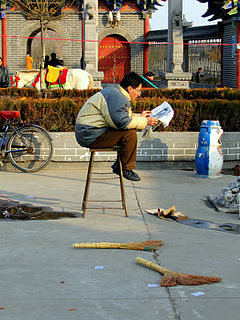Reading Research Reports
| Unit 1: Introduction to Research in Psychology | |
|---|---|
| Introduction to Research in Psychology | Getting Started | Unit 1 Overview | Unit 1 Outcomes | Unit 1 Resources | An Introduction to Psychological Science | Literature Searches | Reading Research Reports | Basic Concepts | Conducting Ethical Research | Activities and Assessments Checklist | Practice Assignment 1 |
Types of Articles
Not all articles retrieved from academic journals are going to be research articles. Knowing the potential components of an academic journal will help you to determine which articles are research articles, and which are not. Not all components of a peer-reviewed journal is subject to the peer-review process. You would need to read a specific publication's editorial policies to determine whether their letters to the editor, book reviews, and news briefs are peer-reviewed prior to publication, or whether they just review feature-length research articles. Read the 'Academic Journals: More than Peer-Reviewed Articles' for more information about the different types of articles.
Reading Research Articles/Reports
Research reports (also called research articles) in psychology cover an enormous range of topics. However, most use a very similar format. This format is referred to as American Psychological Association (APA) style, which is introduced in detail in Chapter 11 of your textbook. The value in having a highly specific format for a research report is that readers know where in each report to find information. Sometimes sections of the report are combined (like Results and Discussion), and some journals have no section headings (for example, the journal Science), but the contents of a research report are almost always presented in the same order. The seven parts of a basic research article are described in your textbook.
The first part of the journal article is the Abstract, a brief summary of the rationale, methods, and results of the study. Reading this first will give you an idea of what is to come.
A word of advice: You may find it helpful to read the remainder of the article in a non‐sequential order. Specifically, you may wish to read the last paragraph of the Introduction first. This paragraph typically summarizes the procedure and the hypotheses of the study. If you read this paragraph first, then you have a general framework with which to understand the research report. This framework usually helps the reader grasp the methods and motivation of a study more efficiently. After you have developed this framework, it may be helpful to read the first paragraph of the Discussion. This paragraph typically summarizes the results of the study by giving a very short description of the study’s purpose and then describes the findings without the statistical analyses. After reading this paragraph, you can more easily comprehend the Results section of the article.
Peer Review
Research findings and theories are presented in many forms: books, interviews, public presentations, and scientific meetings. However, articles that appear in peer‐reviewed journals are regarded as having a particularly high status. An article that appears in a peer‐reviewed journal is first submitted to the journal’s editor. The editor then distributes the article to two or three experts (peers) in the research area addressed by the article’s author. Based on the editor’s expertise and the comments of the reviewers, the editor determines whether the article is of sufficient value to warrant publication. This is a very rigorous process. For example, in journals such as Science and American Psychologist, it is not uncommon for over 90 per cent of the submitted articles to be rejected. Even if an article is accepted for publication in a peer‐reviewed journal, it is typical for this article to be accepted only under the condition that the author makes several modifications. These modifications may include rewriting the paper for clarity, reanalyzing the data using a different statistical approach, including additional ideas, citing additional references, or running an additional control group. Unlike student research papers which are typically submitted just once to your professor, the author of a journal article and the editor of that journal may go back and forth with the paper over many weeks or months revising, editing, and clarifying information.
We can contrast the demanding process of publishing an article in a peer‐reviewed journal with presenting information on the Internet. There are no, or only a few, quality‐control checks and balances on the Internet. Though excellent articles may appear there, the vast majority are articles that would never be successful if they were subjected to the peer‐review process. Therefore, because it is often difficult to evaluate the quality of articles that appear on the Internet, scientists rely on peer‐reviewed journals. For this reason, you should be wary of referencing internet sites unless they are the online version of a reputable peer-reviewed journal.
Not all science publications are peer reviewed, however. For example, Scientific American and Psychology Today are not. These types of magazines serve a valuable function in disseminating research findings and ideas to the educated public. However, they do not have the rigour of peer review. In order to determine whether a journal is peer reviewed, read the section in the journal, usually called “Instructions to Authors.” This section describes the process that potential authors must follow in order to have their papers published in that journal. If it describes a procedure that includes having copies of your article distributed to reviewers, then the journal is peer reviewed. Most databases, including PsycINFO, include both peer‐reviewed (refereed) and non‐refereed articles. Some databases, such as Academic Search Premier, allow you to check a box labelled “Scholarly (Peer Reviewed) Journals,” which eliminates from your search journals that are not peer reviewed. However, not all articles that appear in a peer‐reviewed journal are peer reviewed. For example, the journal Science is very rigorously peer reviewed. However, Science includes letters to the editor and advertisements that are not peer reviewed.


